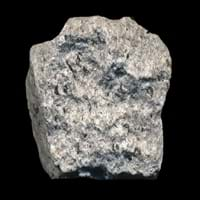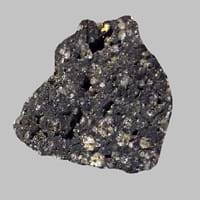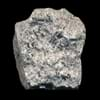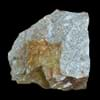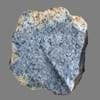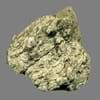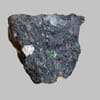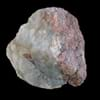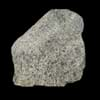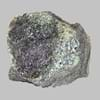Porphyry and Borolanite
Definition
Definition
Porphyry is a reddish-brown to purple igneous rock containing large phenocrysts of various minerals embedded in a fine-grained matrix
Borolanite is a variety of Nepheline Syenite and belongs to igneous rocks and contains nepheline-alkali feldspar pseudomorphs which occur as conspicuous white spots in the dark rock matrix
History
Origin
Egypt
Scotland
Discoverer
Unknown
Unknown
Etymology
From Old French porfire, from Italian porfiro and in some cases directly from Latin porphyrites
From Alkalic Igneous complex near Loch Borralan in northwest Scotland
Class
Igneous Rocks
Igneous Rocks
Sub-Class
Durable Rock, Hard Rock
Durable Rock, Medium Hardness Rock
Family
Group
Plutonic
Plutonic
Other Categories
Fine Grained Rock, Opaque Rock
Fine Grained Rock, Opaque Rock
Texture
Texture
Porphyritic
Granular
Color
Black, Brown, Green, Grey, Red, Rust, White
Brown, Buff, Cream, Green, Grey, Pink, White
Maintenance
Less
Less
Durability
Durable
Durable
Water Resistant
No
Yes
Scratch Resistant
Yes
No
Stain Resistant
Yes
No
Wind Resistant
No
Yes
Acid Resistant
Yes
Yes
Appearance
Dull
Banded and Foilated
Uses
Architecture
Interior Uses
Decorative Aggregates, Interior Decoration
Countertops, Decorative Aggregates, Flooring, Homes, Interior Decoration
Exterior Uses
Garden Decoration, Paving Stone
As Building Stone, As Facing Stone, Paving Stone, Garden Decoration, Office Buildings
Other Architectural Uses
Curbing
Curbing
Industry
Construction Industry
Construction Aggregate
As Dimension Stone, Cement Manufacture, Construction Aggregate, for Road Aggregate, Landscaping, Making natural cement, Manufacture of Magnesium and Dolomite Refractories, Production of Glass and Ceramics
Medical Industry
Not Available
Not Available
Antiquity Uses
Artifacts, Monuments, Sculpture
Artifacts
Other Uses
Commercial Uses
Creating Artwork, Gemstone, Jewelry
Cemetery Markers
Types
Types
Rhomb Porphyry
Not Available
Features
Generally rough to touch, Is one of the oldest rock, Surfaces are often shiny
Application of acids on the surface causes cloudy frosting, Available in Lots of Colors and Patterns, Dissolves in hydrochloric acid, Is one of the oldest rock
Archaeological Significance
Monuments
Used
Used
Famous Monuments
Not Available
Not Available
Sculpture
Used
Used
Famous Sculptures
Not Available
Not Available
Pictographs
Not Used
Used
Petroglyphs
Not Used
Used
Figurines
Used
Used
Fossils
Absent
Absent
Formation
Formation
Porphyry is formed in two stages: the magma cools slowly deep within the crust or the magma is cools rapidly as it erupts from a volcano, creating small grains that are usually invisible to naked eye.
Borolanites are formed due to alkaline igneous activities and are generally formed in thick continental crustal areas or in Cordilleran subduction zones.
Composition
Mineral Content
Biotite, Chert, Feldspar, Garnet, Graphite, Quartz, Silica
Albite, Amphibole, Biotite, Cancrinite, Feldspar, Hornblende, Plagioclase, Pyroxene, Sodalite
Compound Content
Aluminium Oxide, CaO, Iron(III) Oxide, Potassium Oxide, MgO, Sodium Oxide, Silicon Dioxide, Titanium Dioxide
Aluminium Oxide, CaO, Iron(III) Oxide, FeO, Potassium Oxide, MgO, MnO, Sodium Oxide, Phosphorus Pentoxide, Silicon Dioxide, Titanium Dioxide
Transformation
Metamorphism
Yes
Yes
Types of Metamorphism
Burial Metamorphism, Cataclastic Metamorphism, Contact Metamorphism, Hydrothermal Metamorphism, Impact Metamorphism, Regional Metamorphism
Regional Metamorphism
Weathering
Yes
Yes
Types of Weathering
Biological Weathering, Chemical Weathering, Not Registered
Chemical Weathering, Mechanical Weathering
Erosion
Yes
Yes
Types of Erosion
Chemical Erosion, Coastal Erosion, Glacier Erosion
Wind Erosion
Properties
Physical Properties
Hardness
6-7
5.5-6
Grain Size
Fine Grained
Fine Grained
Fracture
Irregular
Conchoidal to Uneven
Streak
White
White
Porosity
Less Porous
Less Porous
Luster
Dull
Greasy to Dull
Compressive Strength
Not Available
150.00 N/mm2
14
Cleavage
Not Available
Not Available
Toughness
1.7
Not Available
Specific Gravity
2.5-4
2.6
Transparency
Translucent to Opaque
Translucent to Opaque
Density
2.5-2.52 g/cm3
2.6 g/cm3
Thermal Properties
Resistance
Heat Resistant, Impact Resistant
Heat Resistant, Impact Resistant, Wear Resistant
Reserves
Deposits in Eastern Continents
Asia
China, Kazakhstan, South Korea, Thailand, Turkey, Vietnam
Indonesia, Iran, Russia, Saudi Arabia, Sri Lanka, Taiwan, Thailand, Turkey, Turkmenistan, Vietnam
Africa
Egypt, Ethiopia, Ghana, South Africa
Angola, Egypt, Madagascar, Namibia, Nigeria, South Africa
Europe
Finland, France, Germany, Great Britain, Hungary, Iceland, Ireland, Italy, Netherlands, Norway, Romania, Sweden, Switzerland
Andorra, Finland, France, Great Britain, Italy, Norway, Portugal, Spain, Sweden
Others
Greenland
Greenland
Deposits in Western Continents
North America
Canada, Cuba, Jamaica, USA
Canada, USA
South America
Bolivia, Brazil, Colombia, Ecuador, Paraguay
Brazil, Chile, Colombia, Uruguay, Venezuela
Deposits in Oceania Continent
Australia
New South Wales, New Zealand, Western Australia
New Zealand, Queensland, South Australia, Tasmania, Western Australia
All about Porphyry and Borolanite Properties
Know all about Porphyry and Borolanite properties here. All properties of rocks are important as they define the type of rock and its application. Porphyry and Borolanite belong to Igneous Rocks.Texture of Porphyry is Porphyritic whereas that of Borolanite is Granular. Porphyry appears Dull and Borolanite appears Banded and Foilated. The luster of Porphyry is dull while that of Borolanite is greasy to dull. Porphyry is available in black, brown, green, grey, red, rust, white colors whereas Borolanite is available in brown, buff, cream, green, grey, pink, white colors. The commercial uses of Porphyry are creating artwork, gemstone, jewelry and that of Borolanite are cemetery markers.
|
||
|
||
|
